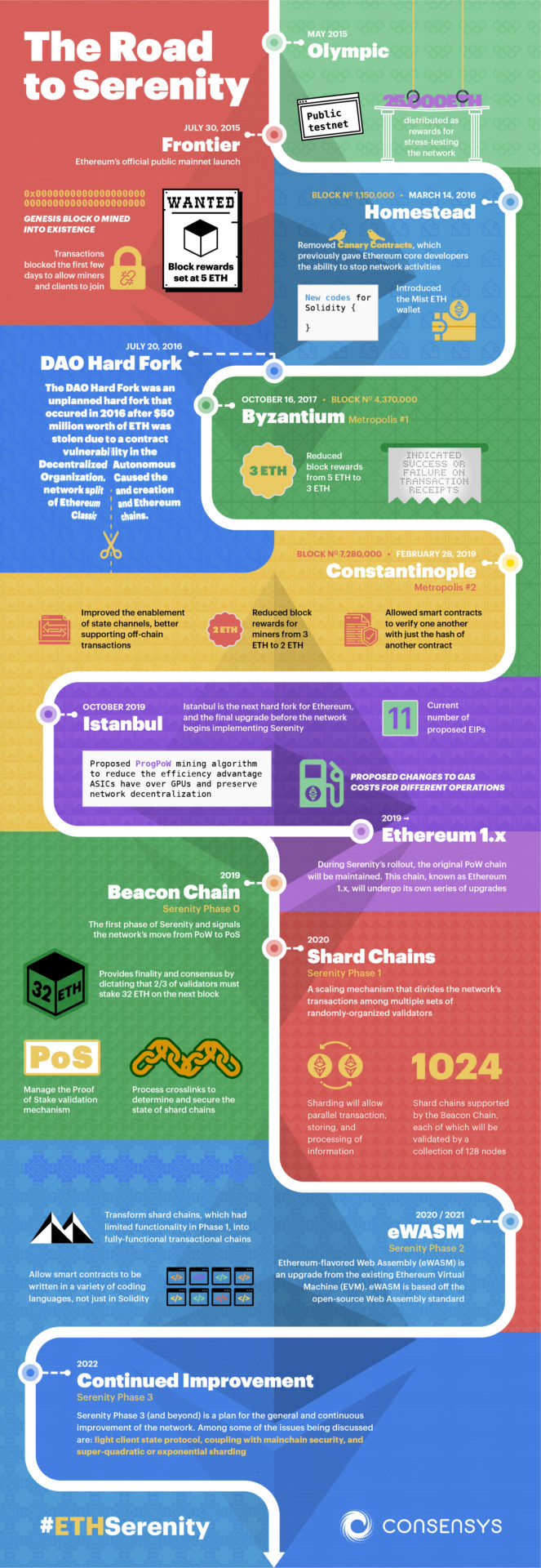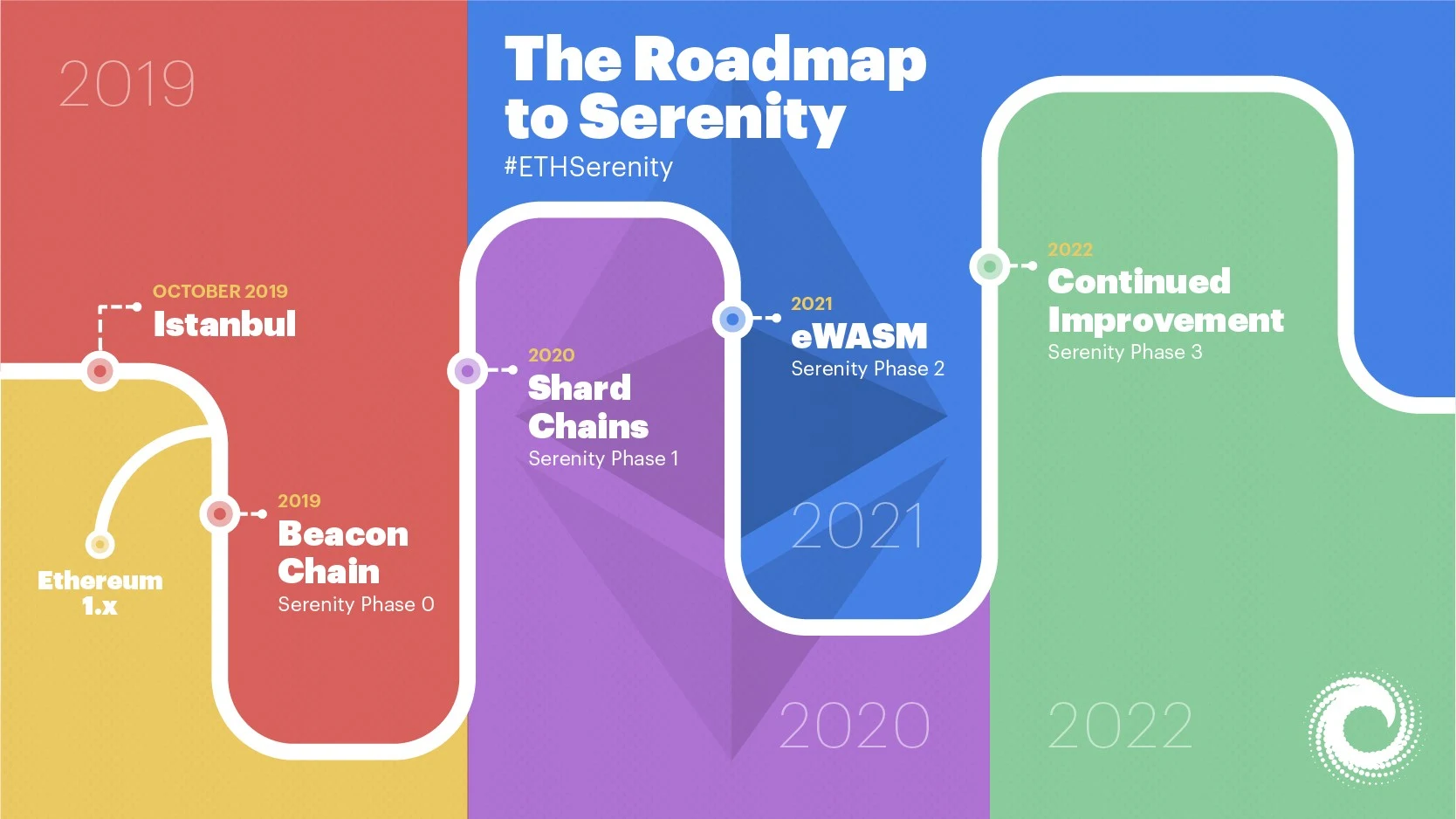has been one of consistent improvements and upgrades to the core protocol. After February’s
and the upcoming Istanbul hard fork, the Ethereum community is approaching Serenity, the eventual and final iteration in Ethereum’s evolution. Serenity — explained in detail in
— will take place in multiple stages, each estimated a year apart from each other. Ethereum 2.0 — as Serenity is also known — is being guided by
:
Simplicity, Resilience, Longevity, Security, Decentralization
. The gradual approach to Serenity is meant to ensure all principles are developed and upheld, further positioning Ethereum as a market leader in blockchain-based solutions.

